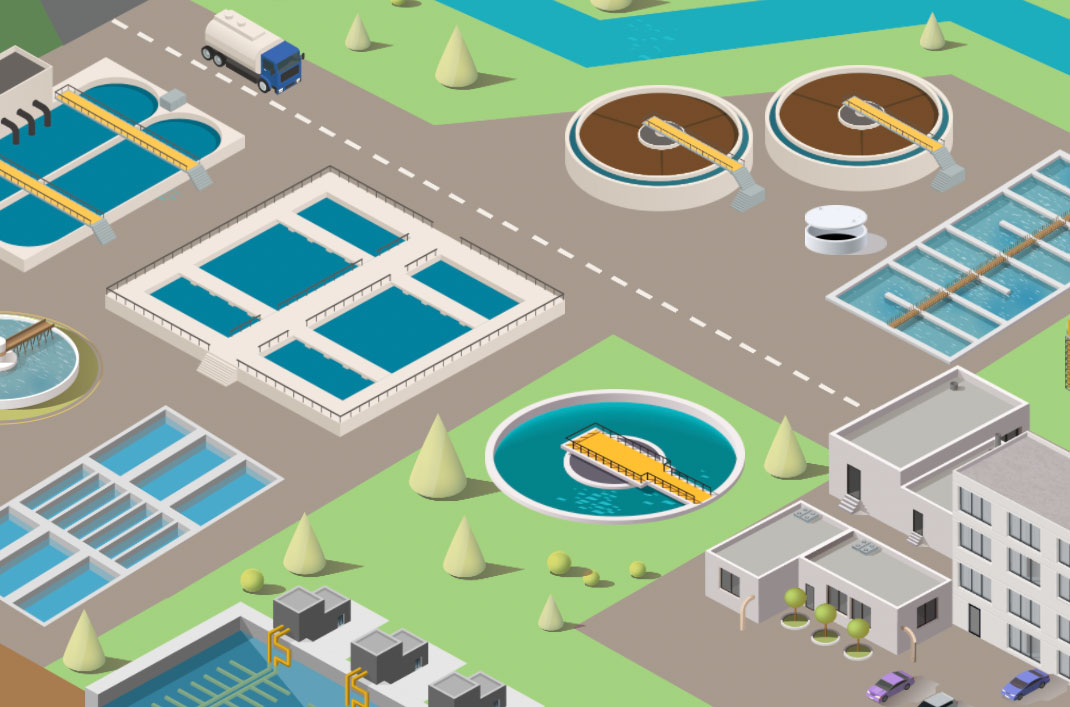By: Bill Seawell, Induron Technical Service Manager
 Water and wastewater treatment plants require a variety of industrial coatings due to their diverse service environments. From potable water immersion to aeration basins to exterior weathering systems, each service is different and requires a specialized coatings solution for corrosion protection.
Water and wastewater treatment plants require a variety of industrial coatings due to their diverse service environments. From potable water immersion to aeration basins to exterior weathering systems, each service is different and requires a specialized coatings solution for corrosion protection.
We hope this blog and the previous two blogs in the series will inform both owners and engineers of what to ask and consider when communicating with contractors and paint manufacturers to determine an ideal engineering solution. In previous blogs, we covered potable water storage interiors and basins and channels. In this third installment, we will discuss exterior weathering systems.
What to Consider When Specifying Coatings for Exterior Service (Plant Wide)
Choosing a coating for the exterior of a treatment plant (structural steel, handrails, large tank exteriors and buildings) is, on the surface, easier than selecting a coating system for linings and immersion exposures. However, there are still many things that need to be considered.
As one might guess, exterior weathering exposures vary widely. Whenever a new construction or maintenance painting specification is being developed it is paramount that the materials selected are compatible both with the conditions the dry film will be subjected to, and the application related limitations inherent on site.
Constructability and Pragmatism
Municipal restrictions on blasting, prohibitive time limits, cost of containment, proximity to a major waterway or simply facility company policy are making dry abrasive blasting practically impossible on several existing facilities in North America. One or more of these conditions are becoming more and more common throughout the industry. This is highly relevant for when we develop maintenance specifications for all the non-tank-interior parts of specifications. Specifying a repair material or maintenance coating that requires an SSPC SP-10 blast is simply not going to work in these cases.
Is spray allowed on site? Spray restrictions are becoming more common throughout the industry, as well, especially on tank exteriors (perhaps too many parking lots were painted). A maintenance paint that doesn’t brush or roll on well isn’t going to be a good choice for a site with limited spray options.
These two examples simply demonstrate that the first consideration when selecting an exterior coating should always be constructability. A coating that cannot be applied effectively on site won’t ever be applied effectively enough to even have its dry film properties put to the test.
Dry Film Performance
Not all exterior weathering services are created equal. Average ambient temperature, the existence of nearby chemical fallout, humidity, sunlight, and weather all have appreciable effects on how coating systems weather.
Generally speaking, a two coat epoxy primer/urethane topcoat system will be much more long lived in rural northern Canada than it will be on a beach in Miami, Florida as UV exposure, salt spray, general corrosion rates and erosion effects are much more severe in the latter case than in the former.
When selecting a new exterior paint system, we must consider these kinds of things. Plus, it is often advantageous to view potential coating systems in terms of lifetime cost rather than viewing them strictly in terms of price per gallon of liquid coating. For example, a coating that costs twice as much per gallon but is expected to live four times longer with easier maintenance may be a bargain. At the same time, overengineering a system designed for south Florida for a water treatment plant in rural Canada may not be the best choice.
All in all, I’d like to emphasize that new construction and maintenance/repair coating systems are different problems with different solutions. What makes a coating an ideal new construction choice often makes it a poor choice for maintenance and repair or vice versa. Effective specifications have this as a starting assumption going in and incorporate the manufacturers’ recommendations for maintenance and repair into the details of the new construction specification.
Interested in learning more about treatment plant coatings?
Today’s water and wastewater treatment facilities mandate the very best coatings to protect their assets from harsh corrosive atmospheres. Induron Protective Coatings has developed high performance coating solutions for the numerous exposures encountered in these treatment plants. In fact, our ceramic epoxies have been protecting water, wastewater and sewer structures for more than 30 years. Contact an Induron representative today or check out our Interactive Treatment Plant Specification Guide.




